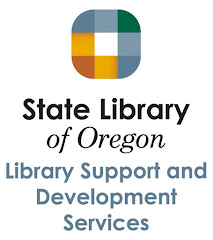Glassman, Paul and Judy Dyki (eds.) Handbook of Art and Design Librarianship. 2nd edition. Neal-Schuman, 2017. ISBN: 978-0-8389-1624-7
Description
The handbook examines methods of innovative librarianship in academic and art school libraries and offers guidelines for information professionals working in art and
design environments who support and anticipate the information needs of
artists, designers, architects, and the historians who study those
disciplines.
Table of Contents
Part 1: Roles and Responsibilities
1. Governance and administration of the art and design library – Paul Glassman
2. Evolution not revolution – Barbara Opar
3. Expanding roles for fine arts liaison librarians – Stephanie Kays
4. Accreditation and visual arts libraries – Judy Dyki
5. Design thinking for design librarians: rethinking art and design librarianship – Rachel Ivy Clarke
Part 2: Materials and Collection Management
6. Visual resources: from analogue to digital and beyond – Molly Schoen
7. Developing digital collections – Greta Bahnemann and Jeannine Keefer
8.
Inspirational encounters: management and use of archives and special
collections in the art and design Library – Sarah Mahurter
9. What’s special about special collections? – Lee Sorensen
10. Artists’ books, publications, multiples, and objects – Tony White
11. Exhibition and collection documentation – Gustavo Grandal Montero
12. Tactile Libraries: material collections in art, architecture, and design – Rebecca Coleman and Mark Pompelia
13. Seeing the bigger picture: archival description of visual information – Alyssa Carver
Part 3: Teaching and Learning
14. Embedded in their world: moving mentally into the studio environment – Michael Wirtz
15. Teaching with threshold concepts and the acrl framework in the art and design context – Alexander Watkins
16. Teaching by the book: art history pedagogy and special collections – Sandra Ludig Brooke
17. Meta-Literacies in art and design education – Leo Appleton
18. The art of evidence: a method for instructing students in art history research – Catherine Haras
19.
“I want students to research the idea of red”: using instructional
design for information literacy instruction in the fine arts – Katie
Greer and Amanda Nichols Hess
20. Cultural differences and information literacy competencies – Nancy Fawley
Part 4: Knowledge Creation
21. The ever-shifting landscape: mapping the present and future of digital art histories – Colin Post
22. Critical cARTography: mapping spaces for dialogue about identity and artistic practices – Andy Rutkowski and Stacy Williams
23.
More than just art on the walls: enhancing fine arts pedagogy in the
academic library space – Rachael Muszkiewicz, Jonathan Bull and Aimee
Tomasek
24. Beyond the monograph? transformations in scholarly communication and their impact on art librarianship – Patrick Tomlin
Part 5: Physical Environment
25. Changing typologies in contemporary library design – Leo Appleton, Karen Latimer, and Pat Christie
26. Why is that column in the middle of the room? success in creating classrooms for library instruction – Paul Glassman
27. Finding common ground: creating library spaces for collaboration – Beverly Mitchell
Part 6. Promotion and Sustainability
28. Marketing plans – Paul Glassman
29. Engaging with social media – Ken Laing and Hillary Webb
30. Website strategies for art and design libraries – Judy Dyki
Appendix: Library profiles – Beth Morris



















